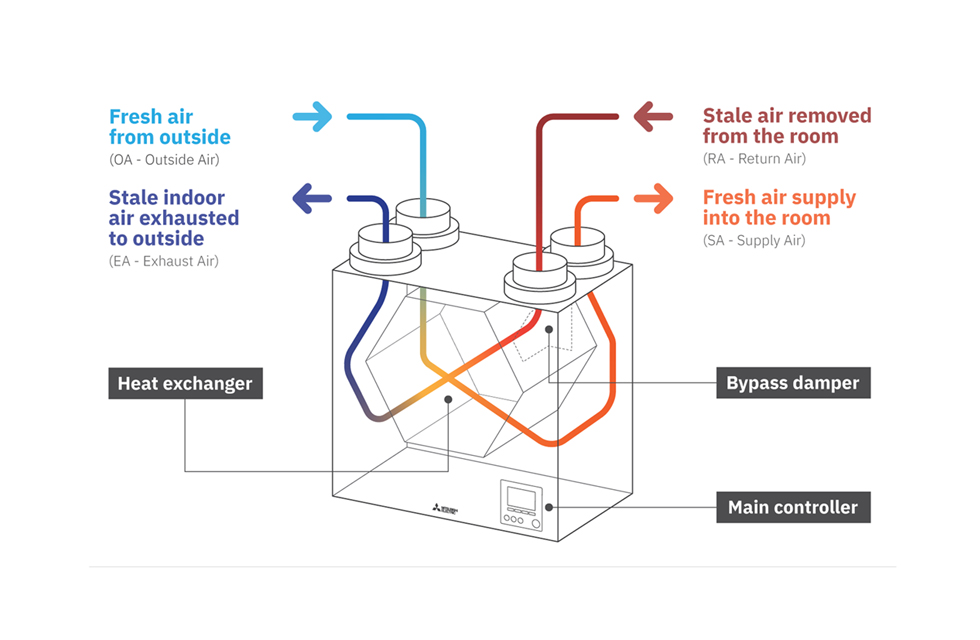The latest updates to Parts L and F of the Building Regulations (due to come into force in June 2022) show the important link between ventilation and energy efficiency.
While government has put renewed focus on creating healthy indoor environments, and reducing overheating in homes, the need for energy efficiency is unabated.
In fact, new dwellings will have to reduce their carbon footprint by around one third against current Part L requirements.
Poor indoor air quality in homes has been shown to have serious health impacts
Hit-and-miss
In 2021, it’s safe to say that we all became much more aware of the importance of indoor air quality at home and work.
I certainly never expected to hear a UK Prime Minister mention the word ‘ventilation’ in a speech to the nation – but he’s done it more than once in the past twelve months. Building services has gained long-overdue recognition, but now our systems have to deliver.
Domestic ventilation systems can be a bit hit-and-miss. They don’t always perform as well as they should and are often misunderstood by homeowners.
Yet their importance can’t be overstated. Poor indoor air quality in homes has been shown to have serious health impacts.
Not only do we face the problems of outdoor pollutants such as NOx making its way indoors, but we also have pollutants created in our homes too – damp from bathrooms and washing; cleaning products; candles; cooking.
It’s a real cocktail of issues that impact on our lungs, heart and even our brains.
A real urgency
At Mitsubishi Electric, we think the issue is one that should be tackled with real urgency.
We have been working with BESA (the Building Engineering Services Association) to raise awareness of the importance of good IAQ and developed a basic guide to IAQ to increase understanding of the importance of this issue.
And in 2021, we also introduced our residential Lossnay mechanical ventilation with heat recovery (MVHR) system. This not only supports healthy indoor environments, but also uses heat recovery to hit the energy efficiency target.

Lossnay is extracts stale air continuously and efficiently from spaces such as bathrooms, kitchens, toilets, and utility rooms. The system replaces this with filtered outdoor air. Heat is recovered from the outgoing stale air and transferred to the incoming air – ensuring that occupants don’t experience cold drafts or have to turn up their heating systems to compensate.
Noise is one of the problems that householders often raise when discussing ventilation systems. And if the extraction is too loud, then they’re more likely to switch a system off. With this in mind, Lossnay was designed to be ultra-quiet and unobtrusive.
Tackling overheating
Overheating is another important issue that government is targeting with new Part O of the Building Regulations. With our hotter summers, some parts of the UK are already experiencing dangerously high indoor temperatures.
Again, Lossnay’s design has taken this into account, and in the summer months the heat recovery feature can be switched off to reduce the risk of overheating.
This means that an apartment, for example, which becomes hot during a summer day, can use the cooler night time outdoor air to ensure good indoor air quality.
Lossnay also offers optional NOx and particulate matter filters (easy to access and clean), so that buildings in the most polluted city environments can benefit from clean, healthy air.
With new regulations on the horizon, it makes sense to adopt a modern approach to residential ventilation that provides excellent results without impacting energy efficiency.
And as homeowners become much more conscious of the benefits of good IAQ at home, it makes sense to offer them a modern solution that won’t impact their energy bills.
Dave Archer is National M&E Manager




